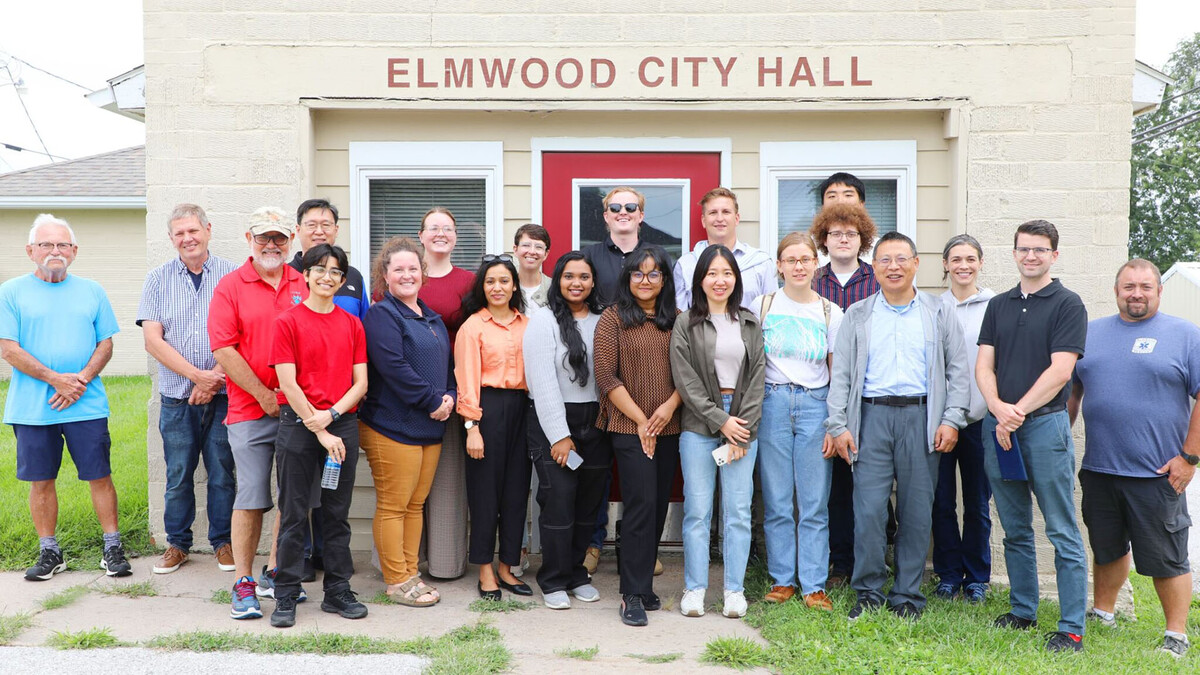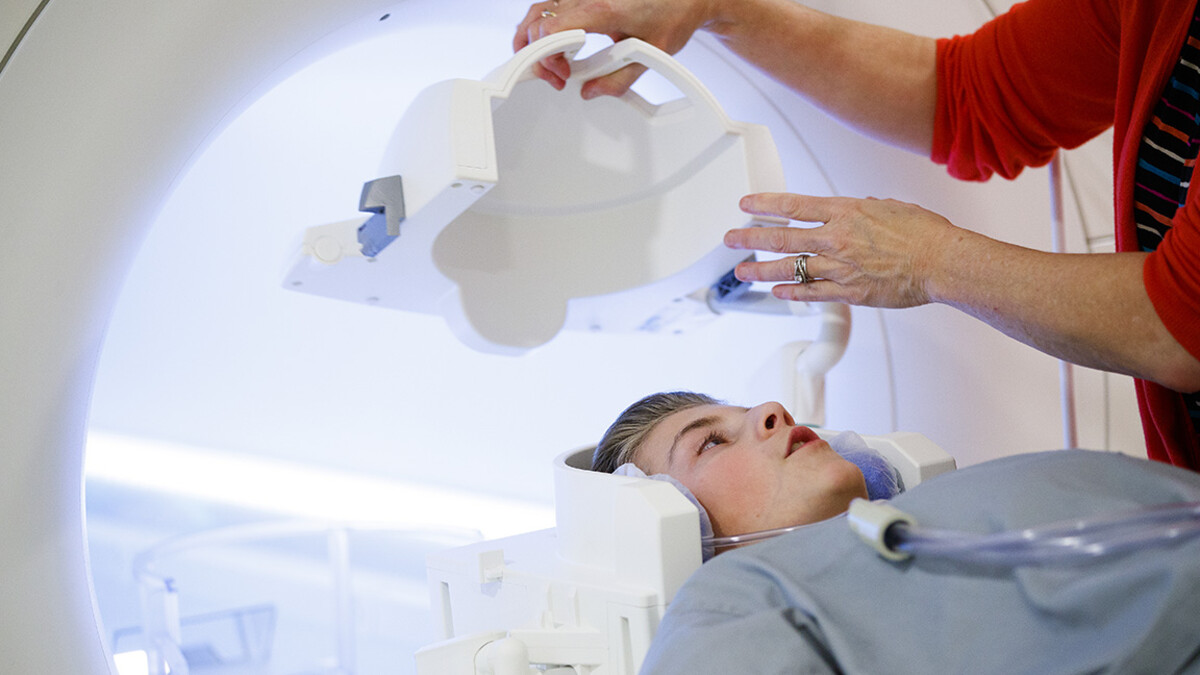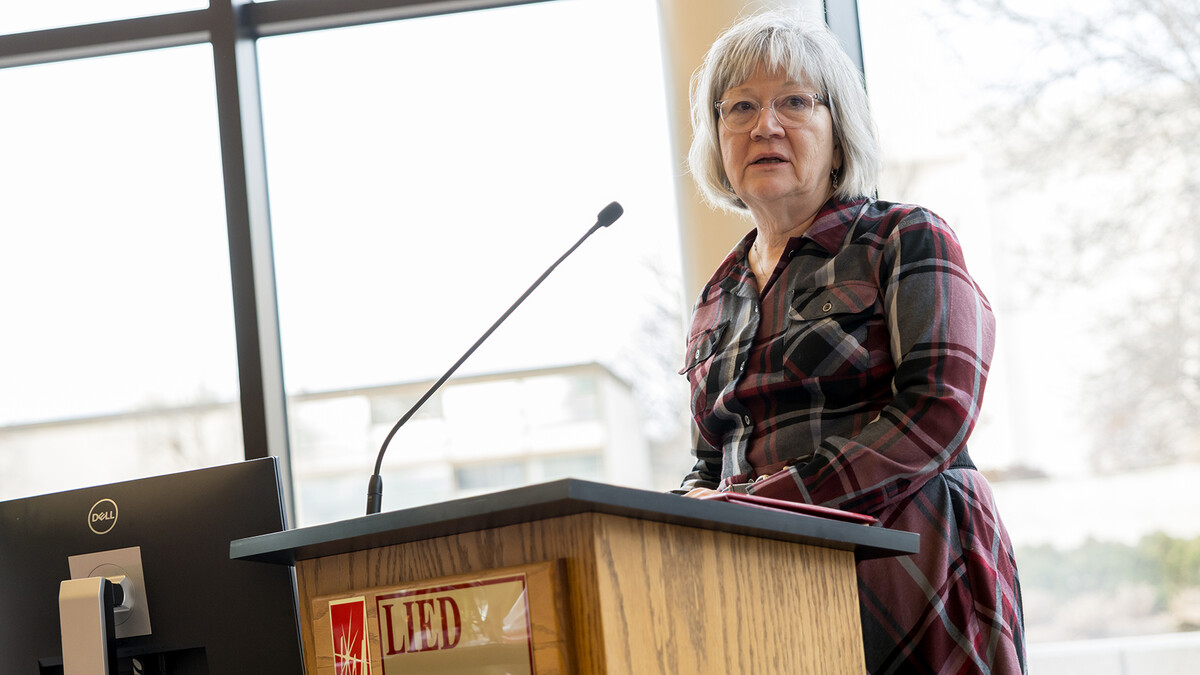
Stories on large-mammal extinctions, ancient bathroom humor and cleverly named beetles put the University of Nebraska–Lincoln in the national spotlight in 2018. More than 350 stories featuring the university, its faculty, students and programs appeared in national media outlets during the year.
A study showing that humans and their ancestors are responsible for an unprecedented wave of large-mammal extinctions was featured in numerous publications in April. Kate Lyons, biological sciences, co-authored the study, which originally appeared in the journal Science. She was quoted in stories in USA Today, NBC News, the New York Post, the Independent, Inquisitr and Futurity, among dozens of other outlets. The study also noted that, should the “downsizing” trend continue at its current pace, a domestic cow may be the largest mammal in 200 years.
Michael Hoff, art history, has led an archaeological dig at the site of the ancient Roman city of Antiochia ad Cragum in southern Turkey every summer since 2005. His team recently uncovered a rare, 2nd-century figural mosaic poking bathroom-style fun at the Greek myths of Narcissus and Ganymede on the floor of a public latrine there. Stories on the discovery appeared in KOLN/KGIN, Atlas Obscura, IFL Science, Live Science, Smithsonian.com and several other media outlets in November.
Brett Ratcliffe, entomology, recently named three scarab beetle species after Daenerys Targaryen’s dragons in the George R.R. Martin book series “A Song of Ice and Fire,” the basis of the HBO series “Game of Thrones.” He has named more than 200 species of scarabs in his career. Stories on Ratcliffe and the beetle naming appeared in the Lincoln Journal Star, Omaha World-Herald, Huffington Post, Mental Floss, NBC News, Smithsonian.com and more than 450 other outlets in December.
Inventors, innovators and trailblazers
The University of Nebraska–Lincoln is partnering with the University of Nebraska Medical Center, Iowa State University and the University of Iowa on the Institute for Antimicrobial Resistance Research and Education. The institute will be based at Iowa State. Stories on the institute appeared in more than a dozen Nebraska media outlets, including the Lincoln Journal Star and Omaha World-Herald, and more than 30 others across the country in July.
The university launched its Canine Cognition and Human Interaction Lab Aug. 11 with the inaugural Husker DogFest. The lab is a research program created by Jeffrey Stevens, psychology. Its research focuses on understanding both dog psychology and how interacting with dogs influences human behavior and psychology. Stories on the lab appeared in more than a dozen Nebraska media outlets, including the Lincoln Journal Star and Omaha World-Herald, and more than 20 others nationwide, including BTN.com.
A research team led by Donald Umstadter, physics, confirmed a theory that plasma electrons within the path of intense laser-light pulses are almost instantly accelerated to nearly the speed of light. Stories on the team’s experiment appeared in Evaluation Engineering, Research and Development, Science Daily, Universe Today and several other media outlets in September.
The University of Nebraska received a $250,000 NASA pilot-program grant to create a nationwide network of students, faculty and practitioners interested in space law and policy. The project will be implemented by the Space, Cyber and Telecommunications Law program in the University of Nebraska College of Law. Stories on the grant announcement appeared in nine Nebraska media outlets and more than two dozen others across the United States.
Adam Houston, Earth and atmospheric sciences, is leading an ambitious new study to use drones to track tornadoes in the Great Plains. The goal is to better understand the causes of tornadoes. Articles on the research appeared in the Grand Island Independent, Lincoln Journal Star, Norfolk Daily News, Omaha World-Herald, Scottsbluff Star-Herald, Drone Below and Unmanned Aerial Online in October.
Michael Sealy, mechanical and materials engineering, is creating dissolvable medical implants using state-of-the-art 3D printers. The goal is to eliminate the need for follow-up surgeries to remove pins, screws and plates. Articles on the research appeared in KLKN, the Norfolk Daily News, Omaha World-Herald, Becker’s Spine Review, Electronic Component News, Medicalnewser, Photonics.com, Phys.org and Today’s Medical Developments in October.
The Extreme Light Laboratory, part of the Department of Physics and Astronomy, is one of the founding members of LaserNetUS — a new research network intended to unite the nation’s most powerful laser facilities. Stories on the network appeared on Bioengineer.org, Phys.org, Tech Site and Technology Today in October.
A University of Nebraska–Lincoln team of engineers and drillers is using a Husker-developed hot-water drill to tap into Subglacial Lake Mercer, about 500 miles from the South Pole. The team is part of the United States-led, multi-institutional Subglacial Antarctic Lakes Scientific Access (SALSA) project, which is exploring how microbial life thrives in one of the most extreme environments on the planet. The Lincoln Journal Star and Nature published articles on the project in December.
A research team led by Eric Weaver, biological sciences, may have identified a safer vaccine that would defend against Zika virus without producing antibodies. The team also includes doctoral students Brianna Bullard and Brigette Corder. Stories on the research appeared on India.com, India Today, Infection Control Today, Medibulletin, Science Daily and several other websites in December.
Trusted experts and recognized authorities
Journalists across the country continue to turn to the National Drought Mitigation Center for their reports on drought and climate. National Public Radio ran a story Dec. 26 on the U.S. Drought Monitor, released weekly by the center. Mark Svoboda, the center’s director, was interviewed for the article, which first appeared on the Colorado Public Radio website. The story was picked up by about 40 media outlets nationwide. Brian Fuchs, associate geoscientist and climatologist at the center, was quoted in an April 17 Huffington Post story on drought and potential water shortages in the United States.
Frans von der Dunk was interviewed extensively in 2018 for his expertise in space law. Among the topics he discussed were President Donald Trump’s desire to privatize the International Space Station (Radio Sputnik, Feb. 13), ownership of moon rocks (Mashable, June 18), ownership of the moon (The Conversation, Newsweek and several other media outlets, July), the U.S. Geological Survey’s interest in mining celestial bodies (Newsweek, Sept. 5), and possible cooperation between the American and Chinese space agencies (Politico Space, Oct. 5). He was also a guest on Roundtable with David Foster in September and discussed laws related to space travel in an October Newsy interview.
Economists Ann Mari May and Mary McGarvey also appeared in a number of national news stories in 2018. Their research — on the differences between male and female economists, and women being underrepresented in the field — was highlighted in The New York Times in February, The Economist in February and May, the International Monetary Fund’s Finance and Development magazine in June and Truthout.org in August.
A sampling of other university experts quoted in 2018:
Paul Blum, biological sciences, January in Fast Company and April in The Guardian, his startup company Neurocarrus’ alternative to opioids.
Kelsy Burke, sociology, April in The Conversation, Christian right opposing pornography but supporting President Trump; December in The Huffington Post, conservative evangelical sex message boards.
Kelsy Burke and Emily Kazyak, sociology and women’s and gender studies, February in The Conversation, Nebraskans’ opinions of “religious freedom” laws.
Ed Cahoon, biochemistry, August in Popular Mechanics, MSN.com and Dallas Morning News, September in China Daily and NET News, discovery of new fatty acids in oil of Chinese violet cress.
Daniel Ciobanu, animal science, December in Feedstuffs and Pork magazine, gene associated with pigs’ susceptibility to porcine circovirus 2 identified.
Wheeler Winston Dixon, film studies, March in Toronto Star, comparing “The Wiz” to “Black Panther”; November in Los Angeles Times, discontinuation of classic-movie streaming service FilmStruck.
Richard Edwards, Center for Great Plains Studies, July in The Washington Post, saving black homesteading sites.
Jody Green, Nebraska Extension, July in Reader’s Digest and AOL.com, spotting bed bugs in an airplane seat; December in Delish, insects in kitchen spices.
John Hibbing, political science, October on NPR’s Hidden Brain podcast, psychological and neurological differences between conservatives and liberals.
Justin “Gus” Hurwitz, law, May in MarketWatch, proposed T-Mobile-Sprint merger, race to deploy 5G technology; July in The Wall Street Journal, European Union fining Alphabet Inc.; October in Salon, U.S. Department of Justice suing California over its net neutrality law; October in Popular Science, challenges of expanding internet access in Nebraska.
Kenneth Kiewra, educational psychology, October in The Wall Street Journal, note-taking tips.
Ari Kohen, political science, September on PBS’ “The Great American Read,” heroism.
Rodney Moxley, veterinary medicine and biomedical sciences, December on CBC, efficacy of cattle vaccine for E. coli.
Chigozie Obioma, English, July in The Guardian, comparing mental health in United States, Nigeria; December in The New York Times, origins of his love of books.
Daniel Piatkowski, October in The Conversation, GreenBiz, Fast Company and U.S. News and World Report, autonomous vehicles versus people-centered communities.
Josephine Potuto, law, January in The New York Times, NCAA’s inquiry into sexual abuse by Larry Nassar; March in Inside Higher Ed, “one-and-done” phenomenon in college basketball; April in Inside Higher Ed, commission’s recommendations to reform college basketball; August in Inside Higher Ed, NCAA rule saying Division I institutions must cover costs for certain basketball players who return to college.
Kenneth Price, English, October in The New York Times, Walt Whitman’s Civil War reporting.
Karl Reinhard, School of Natural Resources, September in National Geographic, discovery of Grand Duchess Vittoria della Rovere’s deathbed medicine.
Marilyne Stains, chemistry, April in Futurity and Inside Higher Ed, traditional lecturing versus more student-centered approaches.
Joe Starita, journalism, October on MedPage Today, Susan La Flesche.
Susan Swearer, educational psychology, April in Forum of Fargo-Moorhead, alleged “rape game” played by North Dakota teenage boys; April on National Public Radio, adolescents engaging in digital self-harm; September in Mashable, teen anti-bullying campaigns; October on Hilarious World of Depression podcast, mental health during adolescence.
University Communication tracks faculty, administration, student and staff appearances in the national media and reports upon them month by month. If you have additions to this list, contact Sean Hagewood, news coordinator, at shagewood2@unl.edu or 402-472-8514. If you have suggestions for national news stories, contact Leslie Reed, public affairs director, at lreed5@unl.edu or 402-472-2059.







